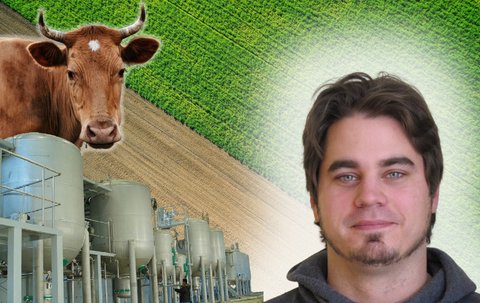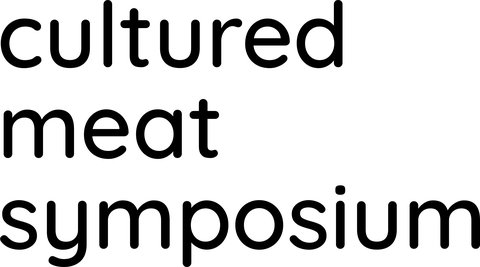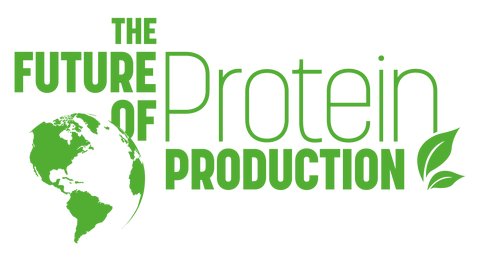Reimagining Global Protein Production for the 21st Century
March 15, 2022 - 16 min read
What options are on the food-tech menu for achieving long-term protein security? Cell culture, plants, microorganisms, algae, and fungi may all have roles to play. But from a sustainability and resilience perspective, is there a clear winner?
It’s a struggle to remain optimistic about the future these days. As if the COVID pandemic wasn’t enough, recent extreme weather events around the world are likely to become more common as the planet gets warmer. Yet despite all the warnings and calls for action, the uphill climb towards a carbon-neutral global economy remains steep. As the world’s population continues to grow, so do per-capita consumption levels across numerous sectors necessary for improving basic standards of living. Given the earth’s limited size and resource constraints, this state of affairs is obviously not sustainable: unless humanity reconfigures its use of natural resources, we will soon reach a breaking point.
Food lies very much at the center of this conundrum. The way we currently produce food exacts huge costs on the environment through greenhouse gas (GHG) emissions, biodiversity loss, land degradation, and freshwater depletion. These effects threaten our ability to maintain future food output in the forms of agricultural yields and marine fishery catches. And if we cannot produce higher volumes of food within our current geographical footprint, we will be forced to continue expanding it. But such expansion would further increase environmental harms, even further threatening future food production levels, thus necessitating even more expansion, and so on in a downward spiral.
But there may be hope on the horizon. Consider for a moment that the way we produce food has not fundamentally changed in the millennia since the Neolithic revolution. In contrast, other technological realms such as medicine, transportation, informatics, and communication have transformed dramatically in just the past thousand years. But if a Bronze Age farmer or fisherman were to somehow travel through time to the present, he or she would have no trouble recognizing a farm or a fishing vessel. Granted, thanks to breakthroughs in engineering and breeding methods, we are capable of far greater harvests today than in the past. But our main mechanisms for food production – plants and animals – reflect a comparatively unevolved technological paradigm. As a result, we’re now beginning to approach the limit of edible calories and nutrients we can extract from the biosphere through these methods alone.
Is there some way we can “hack” the global food system to circumvent its current biophysical limits while minimizing harm to the natural environment? The first step towards considering such solutions requires an understanding of food defined by what it consists of, rather than how it’s produced. For instance, all the foods in your kitchen have one key thing in common: they are made up of carbohydrates, fats, and proteins in various combinations. This is a useful starting point for what qualifies as food for humans. Food also needs to satisfy two other important criteria: it must be digestible, which leaves out cellulosic materials such as wood and most leaves; and it must be non-toxic, which disqualifies many otherwise nutritious fruits, seeds, tubers, and mushrooms.
So if carbohydrates, fats, and proteins make up the desired end point, how can we get there with as little environmental impact as possible? In this article I focus specifically on protein, as it’s by far the most problematic macronutrient with regard to the environmental challenges mentioned above.
Building blocks
Chemically, protein is made up of five elements: carbon, nitrogen, sulfur, oxygen, and hydrogen. Among these, it’s the first three that make food production such a complicated affair. The most common forms of carbon, nitrogen, and sulfur in the natural environment are carbon dioxide gas (CO2), nitrogen gas (N2) and sulfate ions (SO42–), respectively. As humans, we lack the biochemical machinery to take up these three compounds from the surrounding environment and convert them directly into protein. Instead, we rely on other forms of life to carry out these processes for us and then simply eat those organisms to acquire the protein within their tissues.
Consider a pea plant, for instance. It first converts CO2 to sugar through photosynthesis. Some of that sugar is then used to supply the carbon for making protein. Nitrogen gas is not directly accessible for biochemical conversion by any plant, but legumes such as pea plants can form symbiotic relationships with soil bacteria that do have the ability to convert nitrogen gas into other nitrogen compounds, which the plant can then use to make protein. Lastly, sulfur in the form of sulfate ions can be absorbed directly from the surrounding soil and then used for protein production.
From this perspective, when gazing out over a field of crops, what we’re actually looking at is thousands of small, solar-powered chemical converters turning otherwise inaccessible forms of carbon, nitrogen, and sulfur into protein and other nutrients. But a significant portion of the crops we grow are not directly consumed by us. Instead, they’re fed to animals in order to produce higher value protein-rich foods such as meat, dairy, and eggs. This extra conversion step separating our plates from the original crops results in significant losses of potential food calories, nutrients, and water – not to mention the added environmental costs of maintaining large populations of animals for human consumption.
What’s on the food-tech menu?
If plants and animals are our current state-of-the-art technologies, what options exist for tweaking, or even reconfiguring, global protein production systems? Given its disproportionate resource requirements and environmental impact, animal protein is low-hanging fruit. If we could somehow decrease the world’s consumption of animal-based foods, agriculture’s environmental footprint would shrink significantly, including a sizable chunk of total GHG emissions. The problem is that production of animal-based foods is still trending upward due to strong consumer demand and government support around the world. And this trend is likely to continue: In many emerging economies, where populations are growing most rapidly, such foods are often considered a sign of status, and shifting from traditionally plant-centric to more animal-based protein foods remains aspirational.
One approach to offsetting the consumption of animal-based foods such as meat and dairy has been the development of increasingly realistic plant-based analogs. If such products could be adopted at high enough levels, this would indeed be an elegant solution. However, recent retail data suggests we’re still far away from such adoption levels, while other research shows these products may not displace livestock as simply as many had hoped. Perhaps more fundamentally, in a scenario where the planet continues to get warmer, plant protein production will become increasingly vulnerable to extreme weather events and land degradation, compromising its potential as a long-term solution for global food security.
Now let us consider two alternative sources of animal protein that are currently receiving a lot of attention: insects and cell-cultured meat.
Insects are increasingly promoted as a sustainable source of protein due to their lower environmental footprint compared to conventional livestock. In addition, the cultivation of insects isn’t subject to many of the animal welfare concerns or legislation of vertebrate production animals, such as cattle, poultry, and farmed fish. However, like all animal-based sources of protein, there remains an unavoidable efficiency gap when converting plants to insect protein, making the direct consumption of plant-protein the better option. At the moment, the insect protein sector is therefore focused primarily on using high-grade food waste as a feedstock for rearing insects intended for human consumption. As such, the potential global output of insect protein remains limited by the supply of high-grade food waste, and ongoing efforts to reduce food waste could therefore actually reduce our capacity to produce human-grade insect protein.
What about cell-cultured meat? To begin with, there are no animal welfare issues: Cultured muscle cells are quite happy to be densely packed together inside climate-controlled bioreactors. We can also expect the efficiency of converting feed to animal protein to be much higher, with significantly lower water consumption. In addition, this process focuses exclusively on the part of the animal we wish to eat (muscle tissue) without producing all of the inedible and less desirable body parts, such as feathers, bones, and internal organs.
However, there are some significant drawbacks to this technology, with the first one being cost. Cultivating muscle cells outside an animal’s body is complicated. It requires advanced bioreactors, a very specialized mixture of nutrients and growth factors, as well as highly trained staff to operate and monitor the production process. These constraints put it far beyond the reach of most developing economies where animal husbandry, on the other hand, has been practiced for millennia with decidedly low-tech requirements: farmers merely need to keep their livestock watered, fed, sheltered from the elements, and protected from predators. From this view, livestock may be seen as much cheaper, walking, self-replicating bioreactors.
The second major drawback of cell-cultured meat has to do with the fundamental nutritional requirements of animal cells. Animals acquire the bulk of their nitrogen, as well as nearly all their sulfur, in the form of protein. Plants and fungi, on the other hand, can assimilate sulfate directly, as well as inorganic forms of nitrogen such as ammonia (NH3) and nitrate (NO3–). In practice, this means that regardless of whether one is farming whole animals or clumps of muscle cells, they still need to be provided with a protein source, usually of plant origin. From an efficiency perspective, this again raises the question of why we shouldn’t just eat the plant protein. Even if the feed protein conversion ratio — the proportion of protein in the feed that ends up consumable by humans as meat — proves higher in cultured animal cells than in whole animals, it’s still less efficient than simply eating the plant protein directly.
One final drawback of cell-cultured meat is that whole animals have digestive systems while muscle cells do not. Mammalian herbivores, especially ruminants, can digest recalcitrant plant sugars such as cellulose and pectin thanks to the diverse microbial flora inhabiting their digestive tract. Muscle cells lack a comparable enzymatic toolbox and must be provided with much more digestible substrates such as the simple sugar glucose. Thus, even though ruminants contribute to GHG emissions through enteric production of methane (CH4), their ability to digest cellulose allows for exploitation of land for pasture that might not be suitable for growing crops.
Given the above considerations, we can safely say that plants remain the most sustainable conventional protein source for direct human consumption, but they are vulnerable to changes in climate, depletion of freshwater, and soil degradation. Edible insects and cell-cultured meat offer better protein conversion rates than animals, but they offer no efficiency advantages over direct consumption of plant-based protein. Are there any other options?
One alternative to conventional land-based protein sources is algal protein – both microscopic algae as well as macroalgae such as kelp. Cultivation of marine macroalgae does not require soil or freshwater, offering a major advantage over land-based protein crops. However, macroalgae cultivated in coastal waters are still vulnerable to natural disturbances such as storms, marine heat waves, algivorous pests, and diseases. Marine macroalgae are also prone to accumulating toxic metals such as cadmium, and can contain unhealthy levels of iodine. Certain microscopic algae (such as spirulina and Chlorella) have very good nutrient profiles, but open cultivation of microalgae in pond systems is vulnerable to contamination by toxic algae and single-celled algivorous predators. These problems can be overcome by using closed cultivation systems, but not without incurring much higher production costs.
The magic of microorganisms
This brings us to our final option: microbial protein. This category encompasses bulk protein derived from fungal mycelium (mycoprotein), yeast, bacteria, and other microorganisms. Just like plants, most microorganisms can utilize inorganic sources of nitrogen and sulfur and therefore don’t need to be supplied with protein as do animal cells. More importantly, microorganisms can acquire carbon from a wide variety of sources: in addition to sugars and fats, many can also assimilate hydrocarbons, alcohols, and organic acids.
Similar to muscle cells, cultivation of microorganisms requires bioreactors to ensure efficient conversion of the nutrient feedstock into protein, while preventing contamination by unwanted microbes. Although this means that capital costs can also be high, the cultivation parameters of microorganisms are considerably less complicated than those of muscle cells. For example, muscle cells require a solid scaffold to support their growth, while microbial cells can be cultivated to high densities simply by being suspended in large volumes of liquid growth medium, provided that they are continuously stirred and aerated.
Bioreactors also confer one significant advantage over other kinds of conventional protein production: their internal environments (temperature, pH, nutrient composition, etc.) can be precisely controlled irrespective of external conditions. This means that microbial protein can be produced pretty much anywhere on the planet regardless of local climate conditions. It’s also worth noting that bioreactors enable three-dimensional cultivation, while plant and algal proteins are confined to two-dimensional production systems due to their dependence on sunlight for photosynthesis. Compared to soy, for example, the largest bioreactors for microbial cultivation can produce in the range of one million times more protein per surface area unit per year.
What about feedstock?
But just like cell-based meat and edible insects, microbial protein production is constrained by the availability of feedstock. That means the geographical footprint and resource efficiency of microbial protein compared to plant-based, cell-based, algal, or insect protein ultimately depends on how the microorganisms acquire their carbon and nitrogen. Protein-rich legumes such as soybeans, peas, and lentils can assimilate both atmospheric CO2 and nitrogen gas directly thanks to photosynthesis (within their leaves) and bacterial nitrogen fixation (within their root nodules), respectively. Like plants, most microorganisms can use ammonia as a nitrogen feedstock, which can be synthesized chemically from nitrogen gas using the Haber-Bosch industrial process. That leaves carbon. At present, microbial protein products commercially available for human consumption such as Marmite (derived from spent brewer’s yeast) and Quorn mycoprotein rely on sugar as their carbon feedstock. Since this requires arable land for the cultivation of sugar cane or sugar beet, it’s unlikely there are significant reductions in geographical footprint of these compared to plant-based protein products.
One alternative to conventional sugar feedstocks is to instead use inedible carbohydrates such as cellulose and pectin. These are abundant and can be cheaply sourced from waste products of agriculture and forestry or harvested directly from natural vegetation. But they do require complex treatments with chemicals and enzymes to release simpler sugars the microbial cells can convert into cellular protein, and the high cost of enzymes for cellulose and pectin depolymerization remains a major obstacle to using these types of feedstocks.
However, as previously mentioned, many microorganisms can also use other types of carbon feedstocks such as hydrocarbons, alcohols, organic acids, or even CO2. During the 1960s, before the Green Revolution, which dramatically increased yields for key staple crops, many nations were considering using fossil fuels as a carbon substrate for production of microbial protein. Today, this would be out of the question since any fossil carbon fed to microorganisms would be respired into atmospheric CO2, no differently than if it had been burned as fuel. However, methane derived from anaerobic digestion of organic material such as food waste or manure, can be used to cultivate specialized methane-consuming bacteria.
Going photosynthesis-free
Many simple organic compounds such as methane, methanol (CH3OH), and acetic acid (CH3COOH) can also be synthesized chemically from CO2 and used to cultivate microorganisms for protein. This could be revolutionary since it would mean protein can potentially be produced in the complete absence of photosynthesis. Examples of microorganisms that could be cultivated in this way include regular brewer’s yeast and the mycoprotein fungus Fusarium venenatum, both of which are capable of growing on acetic acid instead of sugar as their carbon feedstock.
The CO2 for feedstock synthesis can be supplied by different means. One way is to heat organic waste matter such as wood or plastic to high enough temperatures that they deteriorate into a mixture of CO2, carbon monoxide, and hydrogen gas known as syngas. CO2 could also be captured from industrial emissions (flue gas) or directly from ambient air using a process known as direct air capture (DAC). In both cases, a specialized material binds the CO2 directly and retains it until the material is compelled to release the bound CO2, typically by heating.
Additionally, some bacteria can convert CO2 directly into cellular protein using chemosynthesis – a process similar to photosynthesis but powered by the oxidation of inorganic chemical compounds (e.g., hydrogen gas) instead of light energy. The concept of using chemosynthetic bacteria as an alternative food source dates back to at least the early 1960s when NASA was looking into food production systems suitable for space travel. Recently, a number of biotech startups such as Solar Foods and Air Protein have revived this concept and are busy developing bacterial protein products for both food and animal feed.
Producing microbial protein in the complete absence of photosynthesis could have enormous implications for the geographical footprint of our food systems. A recent study published in the Proceedings of the National Academy of Sciences projected that a solar-powered process for the production of microbial protein, through either chemical conversion of CO2 into organic feedstocks or hydrogen gas-dependent chemosynthetic growth, would use roughly ten percent of the land area required to produce an equivalent amount of soy protein.
However, microbial protein’s potential independence from light energy opens up possibilities for the use of other zero-emission energy sources such as wind, hydro, geothermal, and even nuclear power. As with solar, these energy sources can be used to capture and convert CO2 into organic feedstocks for microbial cultivation. In the case of chemosynthetic bacteria, the bulk of the energy would be used for electrolysis of water to produce hydrogen gas. Depending on the power density of the energy source, the geographical footprint could shrink to well below one percent of the land area required to yield an equivalent amount of soy protein.
Another crucial advantage of microbial protein over other sources is its potential for a significantly reduced water footprint. Many microorganisms suitable for protein production are also salt-tolerant to the extent that they could be cultivated in brackish water or even seawater. If seawater can be used for the cultivation process, the issue of water footprint essentially disappears.
Microorganisms even have one more trick up their sleeve: they can be genetically engineered to produce animal proteins such as those found in milk (casein) and eggs (ovalbumin). These recombinant animal proteins could be used to substitute their “natural” counterparts in a wide range of processed foods. Dairy products using recombinant casein from engineered brewer’s yeast are already commercially available in the United States. Meanwhile, researchers in Finland have managed to engineer a wood-degrading fungus to secrete egg protein instead of the enzymes it would typically use to digest cellulose and other recalcitrant plant materials. So far, these engineered microorganisms are using a sugar feedstock. But re-engineering them to use organic feedstocks derived directly from captured CO2 instead is perfectly achievable.
In this article, I have tried to briefly present the current options for global protein production, noting the main benefits and shortcomings of each in terms of capacity, sustainability, and resilience. Animal sources of protein, whether whole-animal or cell-cultured, fare the worst in this comparison due to their inability to synthesize protein from non-protein precursors such as ammonia and sulfate. Terrestrial plants and algae are both fairly reliable protein sources in terms of capacity and sustainability. However, their vulnerability to external factors such extreme weather events, pests, and disease introduces a significant degree of uncertainty for their potential to feed the global population of tomorrow. Ultimately, microbial sources of protein appear to offer the best profile for food security in a climatically uncertain future — provided that an appropriate feedstock is used for cultivation, which excludes fossil hydrocarbons as well as food-grade sugars. The use of atmospheric CO2 as a feedstock, either directly for use by chemosynthetic bacteria or chemically converted to simple organics, is clearly the most exciting configuration. However, the complete process from CO2 capture to protein has yet to be demonstrated at industrial scale.
Image credit: 10000 L bioreactors from Strategies for Enhanced Production of Plant Secondary Metabolites from Cell and Organ Cultures — Scientific Figure on ResearchGate. Available from: https://www.researchgate.net/figure/Large-scale-10-000-L-bioreactors-developed-for-cultivating-adventitious-roots-of-ginseng_fig8_28142496


















